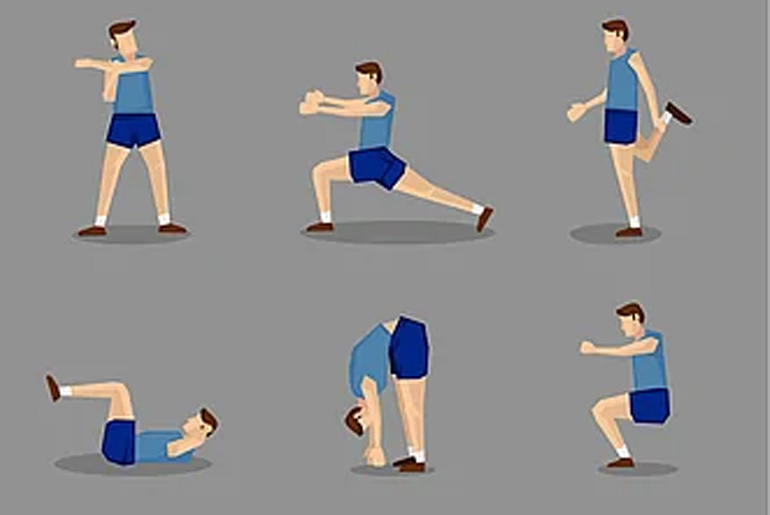Stretching can be a valuable tool for stress relief, offering a quick and accessible way to alleviate tension and promote relaxation in the body. The top 10 stretches for stress relief encompass various muscle groups, from the neck and shoulders to the lower back and legs. These stretches help release built-up stress, improve flexibility, and increase blood flow, fostering a sense of physical and mental well-being. Incorporating deep breathing techniques while stretching further enhances relaxation, making it a holistic approach to stress management. These stretches can be done virtually anywhere and are an effective means of reducing stress and maintaining overall health and balance.
Stretching can be an effective way to relieve stress and tension in your body. Here are ten quick stretches that you can incorporate into your daily routine for stress relief:
1. Neck Stretch:

The neck stretch is a simple yet effective stretch for relieving tension in the neck and shoulders. To perform this stretch, gently tilt your head to one side, bringing your ear toward your shoulder while keeping your shoulders relaxed. Hold this position for 15-30 seconds, feeling a gentle stretch along the side of your neck. Then, switch to the other side and repeat. This stretch helps release built-up stress and tightness in the neck muscles, making it an excellent option for quick stress relief, especially if you spend extended periods sitting at a desk or working on a computer, which can lead to neck and shoulder discomfort.
2. Shoulder Rolls:
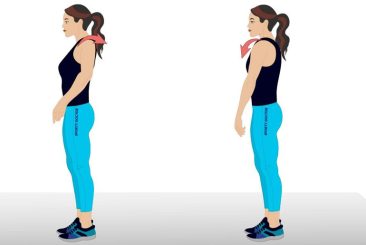
Shoulder rolls are a straightforward and effective stretch for relieving tension in the shoulder area. To perform this stretch, simply roll your shoulders forward and backward in a smooth, circular motion. You can do this standing or sitting, and it’s a quick way to ease tightness in the shoulders, especially if you’ve been holding stress or tension in that area. Shoulder rolls are an excellent choice for a brief relaxation break during a busy day, helping to promote better shoulder mobility and reduce stress-related muscle tension in the upper body.
3. Cat-Cow Stretch:

The Cat-Cow Stretch is a yoga-inspired sequence that involves transitioning between two poses to promote spinal flexibility and alleviate stress. Start on your hands and knees in a tabletop position. Inhale as you arch your back, lifting your head and tailbone (Cow Pose). Exhale as you round your back and tuck your chin (Cat Pose). This flowing movement helps release tension in the back, shoulders, and neck while also encouraging mindful breathing and relaxation. It’s an excellent stretch for reducing stress, improving posture, and promoting a sense of calm and well-being, making it a popular choice in yoga and stress-relief routines.
4. Child’s Pose:
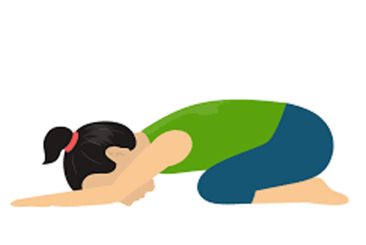
Child’s Pose, known as “Balasana” in yoga, is a resting and relaxing stretch that can help alleviate stress and tension. To perform this pose, kneel on the floor, sit back on your heels, and stretch your arms forward on the ground, palms down. Rest your forehead on the ground, allowing your entire body to relax and release tension. Child’s Pose is often used as a resting position in yoga practice and is known for its calming and soothing effects on the mind and body. It gently stretches the back, hips, and thighs while promoting deep breathing, making it an excellent choice for stress relief and relaxation, especially during moments of overwhelm or anxiety.
5. Seated Forward Bend:

The Seated Forward Bend is a yoga stretch that provides a deep stretch for the hamstrings and lower back while promoting relaxation and stress relief. To perform this stretch, sit with your legs extended straight in front of you. Inhale as you lengthen your spine, and then exhale as you hinge at your hips to reach forward toward your toes. You can hold onto your ankles, shins, or feet, depending on your flexibility. The Seated Forward Bend encourages a gentle release of tension in the back and legs, making it an excellent choice for those seeking relief from stress and stiffness. It also helps promote relaxation and calmness through deep breathing and mindful stretching.
6. Butterfly Stretch:
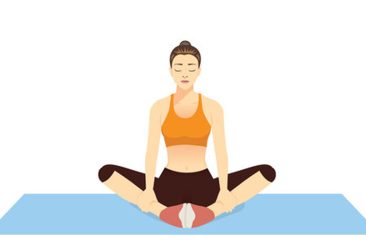
The Butterfly Stretch, also known as the Bound Angle Pose or Baddha Konasana in yoga, is a seated stretch that targets the groin and hip muscles. To perform this stretch, sit with your feet together and your knees bent outward, creating a diamond shape with your legs. Hold your feet with your hands, and gently press your knees toward the ground. This stretch helps release tension in the inner thighs and groin area while promoting flexibility in the hips. It’s an effective way to alleviate stress and improve relaxation, making it a valuable addition to stress relief routines or as a gentle stretch to ease muscle tightness in the lower body.
7. Quad Stretch:

The Quad Stretch is a beneficial stretch that targets the quadriceps muscles at the front of the thigh. To perform this stretch, stand on one leg and bend the other knee, bringing your heel toward your buttocks. Hold your ankle with your hand, gently pulling your foot closer to your glutes while keeping your knees together. This stretch effectively releases tension in the quadriceps and can help improve flexibility in the thigh muscles. It’s particularly useful for individuals who engage in activities like running or cycling, as it can reduce muscle tightness and promote relaxation. Incorporating quad stretches into your routine can contribute to overall stress relief and improved leg mobility.
8. Calf Stretch:
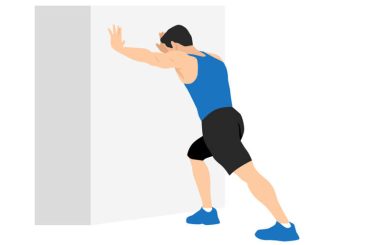
The Calf Stretch is a stretching exercise that primarily targets the calf muscles, located in the back of the lower leg. To perform this stretch, stand facing a wall with one foot forward and one foot back. Bend the front knee while keeping the back leg straight. Lean into the wall to feel a stretch in the calf of the back leg. Hold the stretch for 15-30 seconds, then switch legs. This stretch is beneficial for relieving tension in the calf muscles, especially after activities that involve a lot of walking, running, or standing. It can also be a valuable addition to stress relief routines, as it promotes relaxation and flexibility in the lower legs.
9. Wrist and Forearm Stretch:

The Wrist and Forearm Stretch is a beneficial exercise for alleviating tension and discomfort in the wrists and forearms, particularly useful for individuals engaged in repetitive hand or wrist movements, such as typing. To perform this stretch, extend one arm forward at shoulder height with the palm facing down, then gently use the opposite hand to grasp the fingers and pull them downward while keeping the arm straight. Hold for 15-30 seconds and repeat on the other hand. This stretch helps to improve wrist and forearm flexibility, reduce strain, and promote relaxation in these areas, making it a valuable addition to stress relief and ergonomic routines.
10. Deep Breathing Stretch:

The Deep Breathing Stretch is a calming and mindful stretch that combines deep breathing with physical movement to promote relaxation and stress relief. To perform this stretch, sit or stand comfortably, inhale deeply through your nose while raising your arms overhead, and as you exhale through your mouth, release your arms while letting go of any tension in your body. Repeat this deep-breathing stretch a few times to encourage a sense of calmness and relaxation. It not only helps alleviate physical tension but also enhances mindfulness and can be incorporated into stress-relief routines or as a quick relaxation exercise during moments of stress or overwhelm.
These quick stretches can be done almost anywhere and can help reduce physical tension, promote relaxation, and alleviate stress. Incorporating them into your daily routine, especially during breaks or when you feel stressed, can be a great way to take care of your physical and mental well-being.
Disclaimer:
The information contained in this article is for educational and informational purposes only and is not intended as a health advice. We would ask you to consult a qualified professional or medical expert to gain additional knowledge before you choose to consume any product or perform any exercise.

